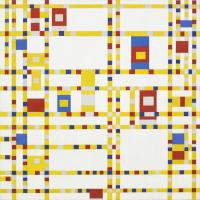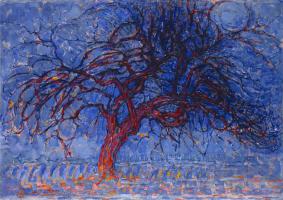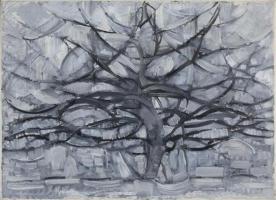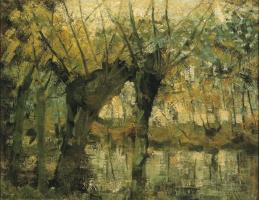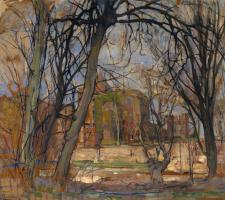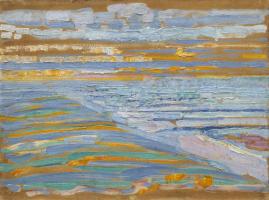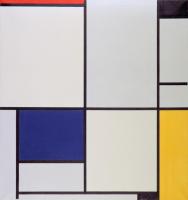Piet Mondrain
Piet Mondrain came from a devout Calvinist family of keen painters and musicians. But their repressive discipline led to his rejection of steady art teaching career in favour of the artist’s life itself, and later still, to his embrace of Theosophy.
This mystical belief system — in humanity’s evolution towards spiritual unity — was popular in the West at that time, not least amongst the pioneers of abstract art, Kandinsky and Malevich. Mondrain encounter with Cubism in 1911 was the critical point of his artistic development, when he removed natural forms from his pictorial vocabulary. Together with Theosophy, it propelled him into the ranks of the avant-garde. The obscure Dutchman left for Paris, the first step towards an international life that would have a lasting impact on western art.
Stranded in Holland by World War I, Mondrain and Theo van Doesburg formed a group and published a magazine called De Stijl (The Style). The writer Schoenmaeker’s ideas of ‘positive mysticism’ we directly incorporated and Mondrain’s aesthetic became their guiding force, committed to purifying modern art and bringing it to everyone via architecture, product design and typography.
The very term, Neo-Plasticism, that Mondrain adopted for his geometric abstractions in 1921, was borrowed from Schoenmaeker. With his typical asymmetrical arrangements of squares and rectangles painted in primary colours divided by black bands on a white ground, Mondrain strove for transcendental experience and pure harmony.
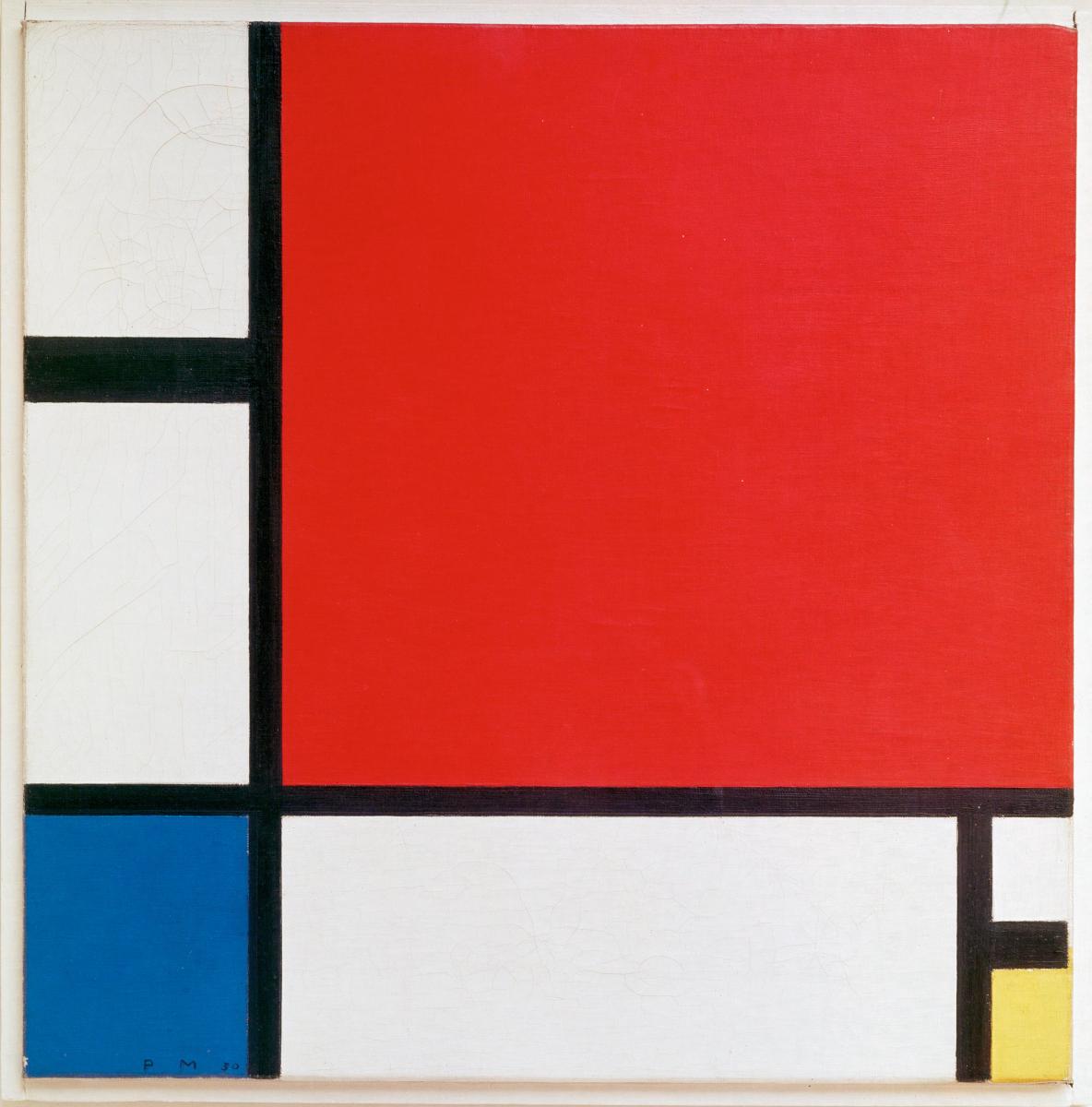 Mondrain kept strictly to vertical and horizontal lines of composition and broke
with Van Doesburg for introducing diagonals into his work in 1924. When
Mondrain moved to New York, in response to his energetic new surroundings, his
lines formed the all-colour grids which came to be called “Boogie Woogie”
Mondrain kept strictly to vertical and horizontal lines of composition and broke
with Van Doesburg for introducing diagonals into his work in 1924. When
Mondrain moved to New York, in response to his energetic new surroundings, his
lines formed the all-colour grids which came to be called “Boogie Woogie”


